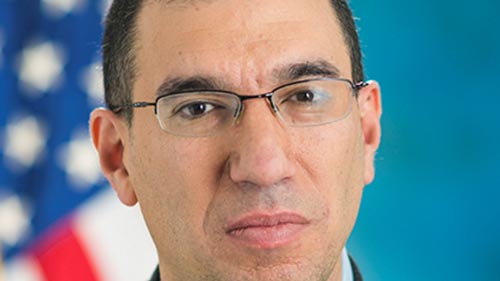Plans for the Quality Payment Program in 2017: Pick Your Pace
 By Andy Slavitt, Acting Administrator of CMS
By Andy Slavitt, Acting Administrator of CMS
As the baby boom generation ages, 10,000 people enter the Medicare program each day. Facing that demand, it is essential that Medicare continues to support physicians in delivering high-quality patient care. This includes increasing its focus on patient outcomes and reducing the obstacles that make it harder for physicians to practice good care.
The bipartisan Medicare Access and CHIP Reauthorization Act of 2015 (MACRA) offers the opportunity to advance these goals and put Medicare on surer footing. Among other policies, it repeals the Sustainable Growth Rate formula and its annual payment cliffs, streamlines the existing patchwork of Medicare reporting programs, and provides opportunities for physicians and other clinicians to earn more by focusing on quality patient care. We are referring to these provisions of MACRA collectively as the Quality Payment Program.
We received feedback on our April proposal for implementing the Quality Payment Program, both in writing and as we talked to thousands of physicians and other clinicians across the country. Universally, the clinician community wants a system that begins and ends with what’s right for the patient. We heard from physicians and other clinicians on how technology can help with patient care and how excessive reporting can distract from patient care; how new programs like medical homes can be encouraged; and the unique issues facing small and rural non-hospital-based physicians. We will address these areas and the many other comments we received when we release the final rule by November 1, 2016.
But, with the Quality Payment Program set to begin on January 1, 2017, we wanted to share our plans for the timing of reporting for the first year of the program. In recognition of the wide diversity of physician practices, we intend for the Quality Payment Program to allow physicians to pick their pace of participation for the first performance period that begins January 1, 2017. During 2017, eligible physicians and other clinicians will have multiple options for participation. Choosing one of these options would ensure you do not receive a negative payment adjustment in 2019. These options and other supporting details will be described fully in the final rule.
First Option: Test the Quality Payment Program.
With this option, as long as you submit some data to the Quality Payment Program, including data from after January 1, 2017, you will avoid a negative payment adjustment. This first option is designed to ensure that your system is working and that you are prepared for broader participation in 2018 and 2019 as you learn more.
Second Option: Participate for part of the calendar year.
You may choose to submit Quality Payment Program information for a reduced number of days. This means your first performance period could begin later than January 1, 2017 and your practice could still qualify for a small positive payment adjustment. For example, if you submit information for part of the calendar year for quality measures, how your practice uses technology, and what improvement activities your practice is undertaking, you could qualify for a small positive payment adjustment. You could select from the list of quality measures and improvement activities available under the Quality Payment Program.
Third Option: Participate for the full calendar year.
For practices that are ready to go on January 1, 2017, you may choose to submit Quality Payment Program information for a full calendar year. This means your first performance period would begin on January 1, 2017. For example, if you submit information for the entire year on quality measures, how your practice uses technology, and what improvement activities your practice is undertaking, you could qualify for a modest positive payment adjustment. We’ve seen physician practices of all sizes successfully submit a full year’s quality data, and expect many will be ready to do so.
Fourth Option: Participate in an Advanced Alternative Payment Model in 2017.
Instead of reporting quality data and other information, the law allows you to participate in the Quality Payment Program by joining an Advanced Alternative Payment Model, such as Medicare Shared Savings Track 2 or 3 in 2017. If you receive enough of your Medicare payments or see enough of your Medicare patients through the Advanced Alternative Payment Model in 2017, then you would qualify for a 5 percent incentive payment in 2019.
However, you choose to participate in 2017, we will have resources available to assist you and walk you through what needs to be done. And however you choose to participate, your feedback will be invaluable to building this program for the long term to achieve outcomes that matter to your patients.
We appreciate the sincere and constructive participation in the feedback process to date and look forward to advancing step-by-step in that same spirit. We look forward to releasing the final details about the program this fall. Most importantly, we look forward to further engagement with physicians and other clinicians toward our shared goal of the highest quality of care and best outcomes for patients.
Get CMS news at cms.gov/newsroom, sign up for CMS news via email and follow CMS on Twitter@CMSgov
View full post from CMS Blog: https://blog.cms.gov/2016/09/08/qualitypaymentprogram-pickyourpace/


